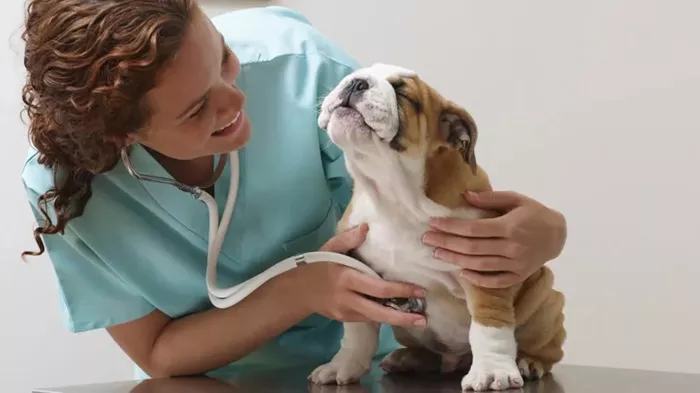As a pet owner, you likely want to make sure that your furry companion is well cared for in the event of illness, injury, or emergency. But have you ever considered the possibility of protecting yourself against claims made by others because of your pet’s behavior? This is where third party pet insurance comes into play. It’s a type of coverage that many pet owners don’t fully understand, yet it can provide significant protection for both you and your pet.
In this article, we will explain in simple terms what third party pet insurance is, what it covers, and why it may be an essential part of your pet care plan. We’ll also go over the differences between third party insurance and other types of pet insurance, as well as help you understand when and why you should consider getting it.
What is Third Party Pet Insurance?
Third party pet insurance is a specialized form of liability insurance designed to protect pet owners against the legal and financial consequences of their pet causing damage or injury to someone else or their property. In simple terms, if your pet injures another person or damages someone’s property, third party insurance covers the costs associated with that incident.
For example, if your dog runs out of the yard and causes an accident by biting another person or damaging their belongings, third party pet insurance would typically cover the medical costs, legal fees, and any other liabilities that arise as a result. This is not something that general pet health insurance would cover, which typically focuses on medical care for your pet itself.
Key Features of Third Party Pet Insurance:
Liability Coverage: Third party pet insurance primarily covers the liability of your pet’s actions, such as biting, scratching, or causing property damage.
Legal Protection: If a legal dispute arises from your pet’s actions, third party insurance can help cover legal fees, court costs, and settlements.
Personal Injury Coverage: If your pet injures someone, the insurance can help cover the injured party’s medical expenses, rehabilitation costs, and more.
Property Damage: If your pet damages someone’s property, such as knocking over a neighbor’s fence or scratching a car, this type of insurance would cover the repairs or replacements.
How Does Third Party Pet Insurance Work?
Third party pet insurance typically works by offering a financial safety net if your pet causes harm to others. Here’s how it generally works in practice:
1. Incident Occurs
Imagine your dog runs out of your yard and bites someone, or your cat damages a neighbor’s belongings. This is where third party pet insurance steps in. The injured party may ask for compensation for medical bills or property damage.
2. You File a Claim
You would file a claim with your pet insurance provider, explaining the details of the incident. You may need to provide documentation, such as a police report, medical records, or an estimate for property repairs, depending on the nature of the incident.
3. Insurance Provider Assesses the Claim
The insurance company will review the situation to determine if the incident is covered under your policy. They’ll assess factors like the severity of the injury, the costs involved, and whether your pet’s actions fall under covered risks.
4. Compensation
If the insurance provider accepts the claim, they will cover the costs of medical bills, property repairs, or legal fees. They may also help with any legal disputes related to the incident.
5. Excess and Limits
Just like other forms of insurance, there are often limits to the coverage and an excess (deductible) that you must pay out of pocket before the insurance company covers the remaining expenses.
Example Scenario
Imagine you are walking your dog at the park when it suddenly attacks another dog or bites a person. The victim may file a claim for their medical treatment, as well as any damages to their property or belongings. Without third party pet insurance, you may be personally liable for these costs, which could be extremely expensive. With third party coverage, however, your insurance provider would cover these expenses up to the policy limit, sparing you from having to pay out of pocket.
What Does Third Party Pet Insurance Cover?
Third party pet insurance generally covers a wide range of liabilities that arise from your pet’s behavior. While specific coverage can vary between insurance providers, most third party policies offer the following protections:
1. Bodily Injury to Others
If your pet causes harm to another person, such as a bite or scratch that leads to medical expenses, third party insurance will cover the costs associated with that injury. This can include immediate medical bills, hospital stays, and rehabilitation costs, depending on the severity of the injury.
2. Property Damage
If your pet causes damage to someone’s property, such as knocking over a neighbor’s fence, scratching a car, or ruining furniture, third party pet insurance can help cover the repair or replacement costs. It ensures that you don’t have to pay for these damages out of pocket.
3. Legal Costs
If a legal dispute arises due to your pet’s actions, third party insurance will cover the cost of legal fees. This can include lawyer’s fees, court costs, and any potential settlements you may need to pay.
4. Public Liability
In some cases, third party insurance also covers public liability claims. For example, if your pet harms someone in a public space, such as a park or street, the insurance will help cover any damages, including compensation for injury or property damage.
5. Injuries Caused by Pets in Public Places
If your pet is involved in an incident that causes injury or damage while in a public place, such as a dog park, third party pet insurance may cover any claims made against you for those injuries or damages.
What Doesn’t Third Party Pet Insurance Cover?
While third party pet insurance offers a lot of valuable protection, there are some limitations to what it covers. These exclusions may vary depending on the insurance provider, but here are some common examples:
1. Injuries to Your Own Pet
Third party pet insurance does not cover any medical expenses related to your own pet’s injuries. For that, you would need a separate pet health insurance policy, which covers the cost of veterinary treatment, surgery, and medication for your pet.
2. Damage Caused by Pets While Under the Care of Others
If someone else is looking after your pet and it causes damage or injury, third party insurance may not cover the incident. It’s important to check with your insurer to understand whether coverage applies in these situations.
3. Incidents Involving Pre-Existing Behavioral Issues
If your pet has a known behavioral issue, such as a history of aggression, some insurers may exclude coverage for claims related to these specific actions. Be sure to disclose any known issues with your pet when taking out the insurance policy.
4. Intentional Acts
If your pet deliberately causes harm or damage (for example, if you intentionally let your dog loose to cause harm), the insurance provider will not cover any resulting claims.
Third Party Pet Insurance vs. Regular Pet Insurance
It’s important to understand the difference between third party pet insurance and regular pet health insurance.
Third Party Pet Insurance:
Covers liability for damages or injuries caused by your pet to others or their property.
Protects you from legal claims or costs resulting from your pet’s actions.
Does not cover medical treatment for your own pet.
Regular Pet Health Insurance:
Covers the medical expenses for your pet, including vet visits, surgeries, medications, and hospital stays.
Does not cover liability for damages caused by your pet to others.
Focuses on ensuring your pet receives proper medical care, whether for accidents, illness, or preventative treatments.
Both types of insurance serve different purposes. While health insurance protects your pet’s health, third party insurance protects you from financial risks arising from your pet’s behavior.
Should You Get Third Party Pet Insurance?
Whether or not you need third party pet insurance depends on several factors:
Type of Pet: Some pets are more prone to aggressive behavior or accidents. If you own a breed known for being more boisterous or difficult to manage, third party pet insurance might be a good idea.
Lifestyle: If you often take your pet out to public places like parks or beaches, there is a higher risk that your pet might cause damage or injury, making third party insurance more valuable.
Risk Tolerance: If you are uncomfortable with the financial risks of liability claims or are concerned about potential legal battles, third party insurance can offer peace of mind.
Budget: While third party pet insurance may seem like an additional cost, it can ultimately save you a significant amount of money in the event of an accident.
Example Scenario
If your dog bites someone at the dog park, medical bills for their treatment can be quite high, potentially reaching thousands of dollars. Without third party insurance, you would be responsible for covering these costs out of pocket. With third party insurance, however, the coverage would pay for the injury, protecting your finances and ensuring that you don’t face a huge financial burden.
Conclusion
Third party pet insurance offers an important layer of protection for pet owners by covering liability for damages or injuries caused by their pets. It can save you from significant financial losses in the event of an accident or lawsuit, and it’s an essential consideration for those who want to ensure comprehensive protection for their pets and themselves. While it doesn’t cover your pet’s medical expenses, it’s an important complement to regular pet insurance. Understanding what third party insurance covers and how it works will help you make an informed decision about whether it’s right for you and your pet.
Related topic:
What Is Pet Insurance Deductible













